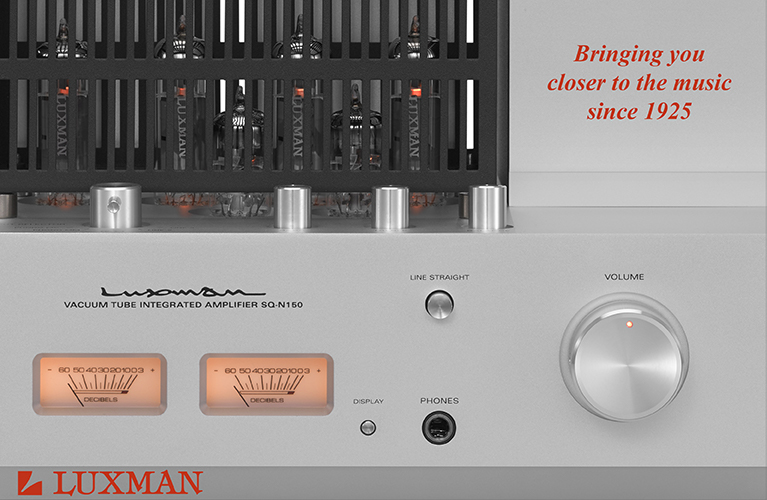Note: Measurements taken in the anechoic chamber at Canada's National Research Council can be found through this link.
 I’ve long been intrigued by Focal loudspeakers, but while I’d heard them at audio shows, I’d never had a pair in my listening room. My curiosity is always piqued by a speaker maker that manages to produce what is arguably one of the finest speakers in the world, the Grande Utopia EM Evo ($229,000 USD per pair), as well as models that most audio enthusiasts can afford -- not to mention Focal’s lines of headphones, and professional and car-audio products.
I’ve long been intrigued by Focal loudspeakers, but while I’d heard them at audio shows, I’d never had a pair in my listening room. My curiosity is always piqued by a speaker maker that manages to produce what is arguably one of the finest speakers in the world, the Grande Utopia EM Evo ($229,000 USD per pair), as well as models that most audio enthusiasts can afford -- not to mention Focal’s lines of headphones, and professional and car-audio products.
The subject of this review, the Spectral 40th loudspeaker, is priced at $9999/pair. The Spectral 40th was designed to celebrate the company’s 40th anniversary, in 2019, but it’s only one of five commemorative products Focal is releasing. The others are: the Scala 40th loudspeaker ($79,999/pair), a Scala Utopia Evo with a cabinet finished in black silver; the F40th car-audio component kit of drivers and electronics ($5499); the Symphonie 40th headphones ($15,000), an amalgam of Focal’s finest headphone models, the Utopia and Stellia, along with their Arche amp-DAC and Questyle QPM player, housed in a case veneered in Macassar ebony and lined inside with beige microfiber; and a new edition of Focal’s Solo6 Be pro-audio speaker in an elegant black finish and stamped “40 year” ($1499 each).
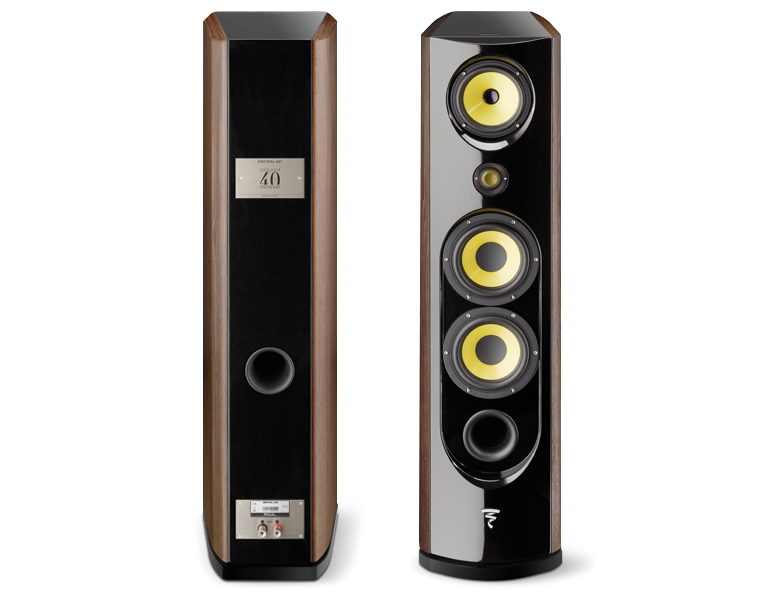
Description
The Spectral 40th was inspired by such legendary Focal models of the 1990s as the Spectral 913.1, the Futura Antea, and the Vega. But of all their 40th-anniversary products, the Spectral 40th is the only one that’s an entirely new design. It’s a four-driver, three-way, floorstanding speaker measuring 45.2”H x 11.9”W x 16.7”D and weighing 101.4 pounds. Focal specifies the Spectral 40th’s sensitivity as 91dB, its nominal impedance as 8 ohms, and its frequency response as 34Hz-30kHz, ±3dB.
The cones of the Spectral 40th’s two 7” woofers are made of Focal’s new K2 sandwich material, based on their Poly-K (for Polykevlar) material, introduced in 1986 and used in the Vega and Antea lines. Poly-K comprised two layers of aramid fiber (hence the distinctive yellow color) with a hollow microball internal structure. In 2016, Focal refined and evolved Poly-K and renamed it K2, which comprises a very light layer of foam sandwiched between layers of aramid fiber and fiberglass.
The woofers hand off at 280Hz to a 6.5” midrange driver mounted above the tweeter. This single-skin driver has only a layer of aramid fiber atop a layer of foam, with no fiberglass layer. The midrange is crossed over at 2.7kHz to a K2 M-shaped tweeter with a 1.3” inverted dome -- a change from the beryllium-diaphragm tweeters used in all higher-end Focal speakers of the last few years.
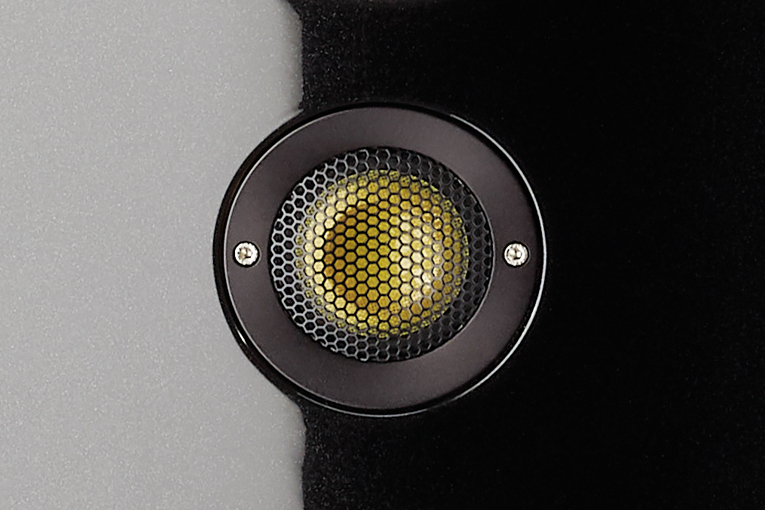
Below the woofers on the front baffle is a port, with another port on the rear, in an alignment Focal calls Powerflow. Also on the rear panel are a single pair of high-quality binding posts and an inlaid, silk-screened metal plaque announcing Focal’s 40th anniversary.
The Spectral 40th’s cabinet is not rectangular in cross section: its nonparallel sides and front baffle are curved, and its top panel slopes down slightly toward the rear. The sides are finished in a rich, dark walnut, and the front, back, and top in a gloss black with a sparkly metallic sheen similar to what you’d see in a high-quality automotive paint job. All of this sits atop a matte-black composite plinth. The speaker is beautiful to look at -- pictures don’t do it justice. I thought the Spectral 40th looked much better with its grilles -- each speaker has two, one each for the midrange and woofers -- but the hardware affixing the drivers to the cabinet is a little too noticeable with the grilles off. I left them on.
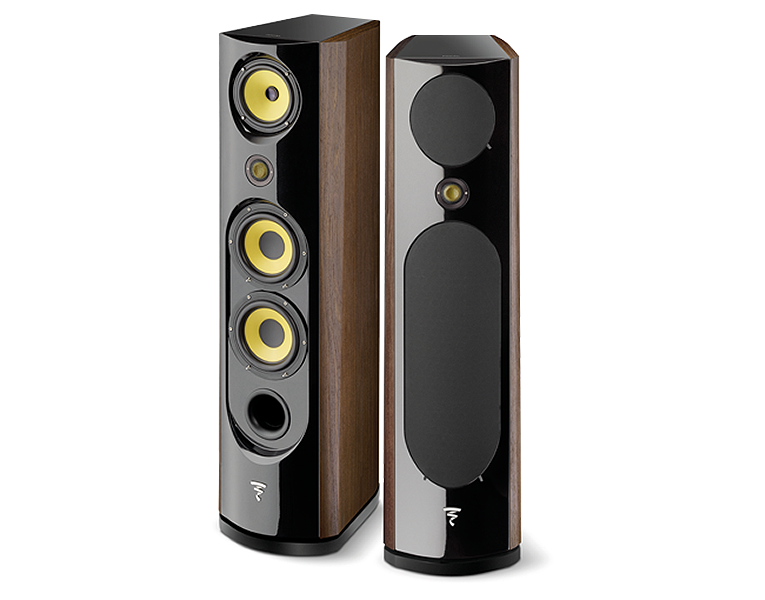
The cabinet is an example of Focal’s stiff, damped Gamma Structure, which combines extensive MDF internal bracing, a curved baffle of 2”-thick MDF, and curved sidewalls of MDF. My knuckles can attest to the stiffness and inertness of these cabinets.
Setup
Unpacking the heavy Spectral 40ths took some work, including help from my wife. When we’d wrestled them out of their boxes, I placed them in the positions usually occupied by speakers in my 15’L x 12’W x 8’H room: 15” from the long wall behind them, and toed in toward my listening position by 18°, the speakers and my high-backed recliner forming a 9’ equilateral triangle. Each Spectral 40th comes with four adjustable metal spikes. Aside from the instruction manual, their boxes contained nothing else. Hmm. The combination of this speaker’s formidable size and my relatively small room immediately had me worrying about bass boom -- but the Spectral 40th doesn’t come with port plugs with which to cure this possible problem. Ah, well -- it would all come out in the listening.
My dedicated basement listening room has wall-to-wall carpet over concrete slab. The side and speaker walls are treated with broadband absorption, and there are bass traps in the front corners. The wall behind the listening position has a variety of diffusion.
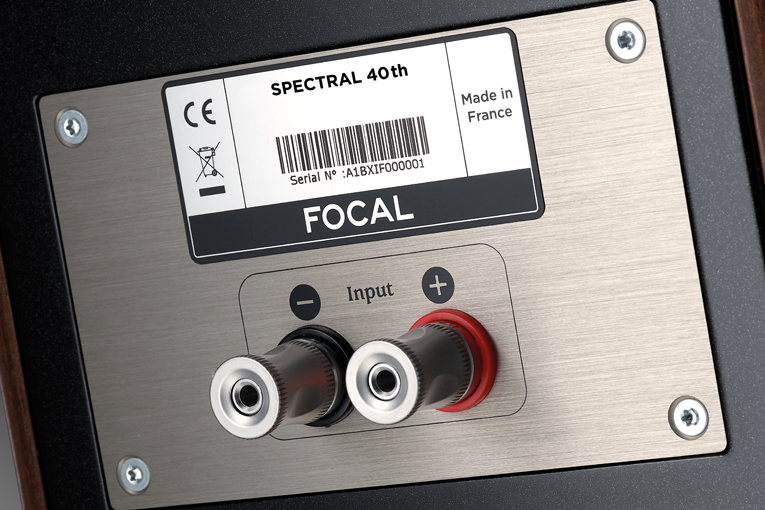
I connected the 40ths to the 8-ohm output taps of my McIntosh Laboratory MC302 power amp. Upstream, I used a Bluesound Node streamer as a source, connected via fiber-optic interconnect to a miniDSP DDRC-22D processor with its Dirac Live room correction turned off, its digital volume control set to maximum and its digital output connected via a TosLink optical link to the DAC in my McIntosh C47 preamp. The C47 was connected to the MC302 via balanced (XLR) interconnects through my two SVS SB-4000 subwoofers, both turned off. (The SB-4000s’ line-level outputs are internally straight-wired to their inputs.) When the DDRC-22D is in the signal chain with Dirac Live turned off, the miniDSP merely upsamples all incoming PCM data to 24-bit/96kHz. The Node, used as a Roon endpoint, was operated via the Roon Remote app installed on a Samsung Galaxy Tab S; the Roon Core software was installed on a laptop computer running Windows 10.
When reviewing a floorstanding speaker, I typically stick with what I feel to be the most appropriate and informative comparison: my Bowers & Wilkins 705 S2 minimonitors run full-range, their output below 50Hz reinforced by my two SVS subwoofers, without Dirac Live. However, after spending some time with the Spectral 40ths, I was so impressed with their sound that I felt the only way my reference system could hope to compete was with the full Dirac Live treatment. I matched the levels of the two pairs of speakers using a 1kHz warble tone and found the Focals to be 4dB more efficient than my B&W-SVS combo. Each time I switched between speakers, I adjusted the volume on my preamp accordingly and, in the case of the Focals, switched off the subs and disengaged Dirac Live.
But before doing any serious listening, I played music at a decent volume through the Spectral 40ths for a few days to ensure that they were broken in.
Sound
The Spectral 40th’s midrange and top end were the best I’ve heard in my room. Focal’s ad copy describes the speaker’s sound as “vibrant” and “expressive,” and I agree. The midrange was quite forward but also impossibly smooth, and oozing with detail. Voices leapt from mixes, but never sounded edgy or irritating. There was an organic, reach-out-and-touch-it quality to the midrange that, though it may not have been perfectly flat, was intoxicatingly beautiful. I’d never heard quite this level of realism in my room before. Images of voices effortlessly floated in space with eerie palpability, with no hint of strain or cabinet colorations to spoil the illusion. I was in love . . .
But the Spectral 40ths didn’t excel only with voices. At the beginning of Jann Arden’s duet with Jackson Browne on her song “Unloved,” from her album Living Under June (16-bit/44.1kHz FLAC, A&M), the plucked strings of two acoustic guitars were imaged just to the right of the left speaker and just to the left of the right speaker, rendered with delicacy and sparkling immediacy. Though these guitars were panned relatively hard right and left, neither sounded as if it was being produced from the cabinet of the nearer speaker -- the Focals’ cabinets did a great job of “disappearing” from the music, which hovered in the room. When Arden starts singing front and center, her voice’s presence, rich smoothness, and realism were haunting. She was there, standing in my room, her voice above and behind the speakers. And when Arden and Browne belt out their lines, though both voices are mixed close to the center, I could clearly hear them distinct from each other. They may have been sharing a space in the center of the soundstage, but the edges of their vocal images were separate from one another -- Browne was slightly behind and above Arden -- and every texture and intonation was laid bare. There seemed to be no barrier between me and this musical event.
There is excessive sibilance on Arden’s voice in this track, so much that, unequalized, its sound is damn near intolerable through the hot tweeters of my reference B&Ws. Though it sounded much better through the Focals, Arden’s voice still had just a hint more sibilance than I would ideally want.
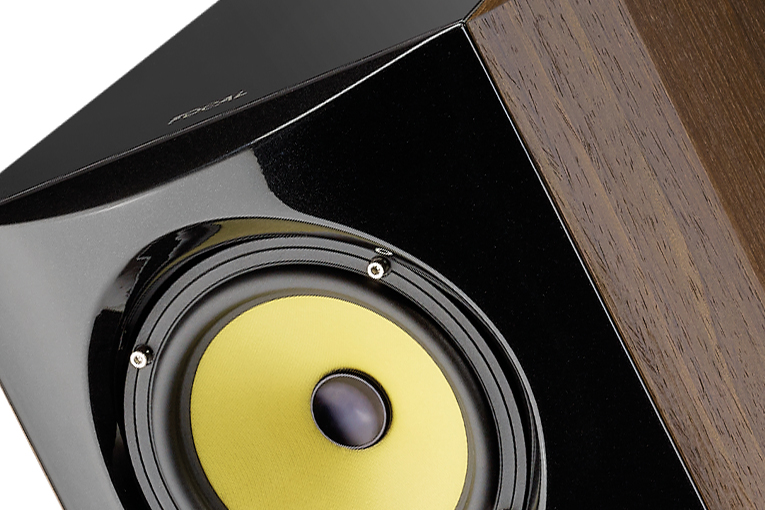
Curious about the Spectral 40th’s unique sound, and as I always do when reviewing speakers, I measured its frequency response in my room with my calibrated miniDSP UMIK-1 microphone. The first thing I noticed was a rise of 2dB or so in the “presence” region between about 400 and 800Hz, which might at least partially explain the speaker’s magical midrange. Second was the plot’s high-frequency region, which was essentially flat (perhaps a 0.5dB rise) from 2 to 16kHz. Many would find this to be perfect; however, I prefer a gentle downslope of 0 to -2dB from 2 to 16kHz. This explains why I felt the Spectral 40ths produced a soupçon too much high-frequency energy in the sibilance region of 5-6kHz. Also worth noting is that I had this minor complaint only with the very few recordings I listened to that themselves overemphasize sibilants.
“Symbolistic White Walls,” from the Matthew Good Band’s Last of the Ghetto Astronauts (16/44.1 FLAC, PolyGram/Tidal), was a change of pace. This well-recorded track has very good, punchy bass, and a complex layering of guitars, drums, and voices. It turned out that my concern about the lack of plugs for the Spectral 40ths’ ports -- speakers of this size can sometimes overwhelm my relatively small room -- was unwarranted. While I can’t say their bass was the best I’ve heard in my room, it was definitely the best bass I’ve heard from a passive, unequalized loudspeaker. When the kick drums enter at the start of this track, I couldn’t wipe the smile off my face. The bass was full and satisfying, but also tight, very fast, and rhythmic. My room was filled with topnotch bass -- I could feel it thump and slam my chest. Although there was a just bit of boom, due to a peak between 40 and 50Hz that almost all speakers produce in my room, the magnitude of that peak was within acceptable limits, which kept the bass completely under control. Because the Focals’ bass was so satisfying without overwhelming my room, it’s possible that they’d underwhelm in a much larger listening space -- but that’s impossible to determine without an actual demo. I went back to my in-room measurement to determine the Spectral 40th’s -3dB point: a very respectable and satisfying 29Hz.
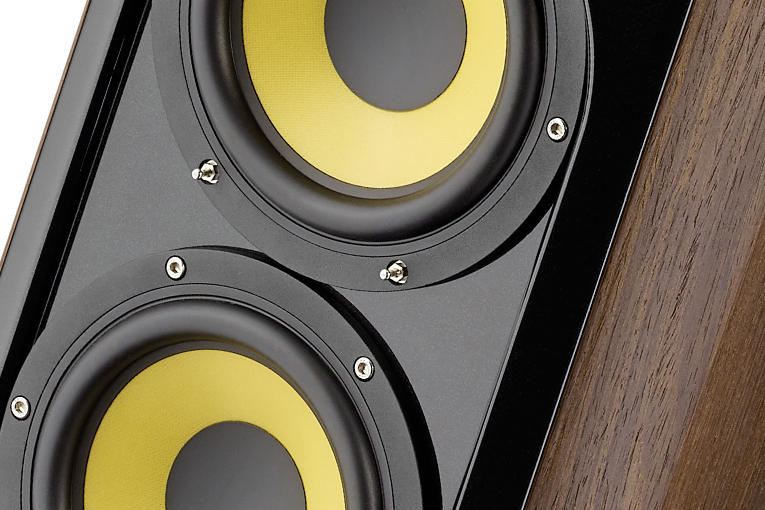
With this track, the same patterns reemerged in the midrange as had with Arden’s “Unloved.” The simple opening guitar chords, imaged to left of center, had bite, and I could hear into the structures of the varying notes. Matt Good’s voice was rendered with superlative presence and body, and was clearly delineated from everything else in the mix. There’s some very subtle reverb on the voices in this track, and the Focals didn’t miss it. In the complex chorus, I could hear all the layers of the grungy rhythm guitars at hard left, the impressive extension of the cymbal crashes, the lead guitar to the right, and always Good’s voice, smooth and present. I could play the 40ths as loud as I wanted without compression -- they always sounded buttery smooth, never edgy or bright, without giving up detail, despite their somewhat forward midrange.
I cued up “Make a Mistake,” from Colin James’s Traveler (16/44.1 FLAC, Warner Music Canada). I chose the track for its simple arrangement, which includes well-recorded cymbals, and the width of its soundstage, on full display in the chorus, where backing singers can be heard hard right and hard left, presumably recorded out of phase. Admittedly, the soundstage width on this track may be somewhat unnatural, perhaps even a mastering trick, but that doesn’t mean I can’t thoroughly enjoy it. Once again, the Focals not only did not disappoint, they exceeded my expectations. The cymbal crashes at left of center, behind James’s voice, materialized with very impressive attack without ever sounding aggressive, shrill, or etched. They sounded almost sweet, with a delicate shimmer, and the decay seemed to go on forever. James’s voice, as by now I expected from these speakers, was eerily real, with imposing presence, detail, and body. And when the backing singers enter for the chorus, the 40ths hid nothing from me -- I could hear every layer of voices, and the width of the soundstage, real or ersatz, extended past the speakers’ outer side panels.
Focal Spectral 40th vs. Bowers & Wilkins 705 S2 & SVS SB-4000 subwoofers (2) with Dirac Live
For this comparison I used my reference setup: B&W 705 S2s ($2500/pair) high-passed at 120Hz with a custom balanced crossover ($495), and reinforced below 130Hz by two SVS SB-4000 subwoofers ($2998/pair), all room-EQ’d with a miniDSP DDRC-22D processor running Dirac Live ($725), for a total cost of $6718, compared to the $9999 for a pair of Focal Spectral 40ths.
Without Dirac Live engaged, my B&W-SVS combo stood little chance against the Focals. The 705 S2s and SB-4000s could hold their own in terms of transparency and imaging, but as for midrange detail, tonality and richness, and accuracy and control in the top end . . . well, it was no contest. In my first comparison with the B&W-SVS combo subjected to EQ by my Harman-inspired target curve, it was still no contest -- the Focals’ magical midrange was missing from the sound of my reference rig. Which makes the Spectral 40ths the first speakers I’ve reviewed that have led me to revisit my Dirac Live target curve. After a bit of tweaking and comparative listening, I added a 2dB bump in the presence region of my target curve, peaking between 500 and 700Hz, closely matching the measured in-room response of the Spectral 40ths in this bandwidth.
In the world of equalization, it’s always better to take away too much of a good thing than to add something that was never there to begin with. My 705 S2s naturally exhibit a bump between about 400Hz and 2kHz and centered around 600-700Hz, followed by another bump between 3 and 19kHz (centered around 7-8kHz). By adding a 2dB boost in the presence region, I was now actually taking away less than I was in my original target curve, which was essentially flat through this range. From 2 to 19kHz I was maintaining my slow 2dB dip, completely removing the 705 S2’s bump in the treble. Armed with my new, improved target curve, which now actually preserved more of my reference speakers’ inherent midrange frequency response, I was ready for some direct, level-matched comparisons with the unequalized Focals.
On balance, I still preferred the Focals through the midrange, though I got the sound quite close with my B&W-SVS combo. I preferred my reference system’s top end, but only on sibilant recordings; otherwise, it was a toss-up. For example, through the Focals, that ever-so-slight sibilant edge in Jann Arden’s voice in “Unloved” wasn’t there with my EQ’d reference setup. The entire midrange delivery, however, was more satisfying to listen to through the Spectral 40ths -- from the extra sparkle and presence in the plucked guitars to the smoother, less edgy, yet more present and holographic-sounding voices, the Focals took the day. The imaging prowesses of the Focals and my reference combo were equally good -- the B&W 705 S2s are exceedingly adept in this department, so for the 40ths to live up to them is high praise for the French floorstanders. The delineation of the two voices in this track, and the space and air between them in the center and the guitars to the left and right, were effectively identical through both pairs of speakers.
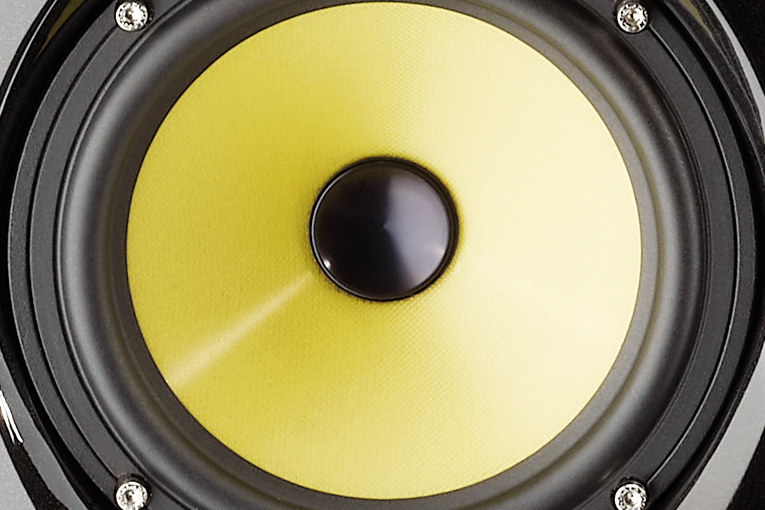
With Matt Good’s “Symbolistic White Walls,” it was the same story in the midrange. Good’s voice had more presence and body through the Focals. In the complex chorus, the Focals also threw a slightly larger soundstage with a bigger sound, and seemed to play slightly cleaner at very high volumes than my reference setup. But as good as the Focals are in the bass, with this track they couldn’t quite match my pair of EQ’d powered subs. This is no indictment of the Spectral 40ths -- no passive, un-EQ’d speaker optimally placed for stereo imaging that I’ve experienced can compete against the subs in my room. It’s a simple matter of room acoustics and the laws of physics. Still, the B&W-SVS combo did deliver slightly more bass slam and pressure to my chest, and a bit more extension with the lowest bass notes, creating a more satisfying sense of fullness in the lower half of my body.
I played Colin James’s “Make a Mistake” and turned my attention to treble performance. This was a tough call -- both pairs of speakers sounded beyond reproach in this part of the audioband. The Focals’ extra energy in the top end made the cymbals sound slightly louder, but I didn’t find this better or worse than my reference combo, just slightly different. Dispersion and decay, too, were very close, and the B&Ws’ soundstage was perhaps just a bit wider -- again, a very tough call.
Back to the midband, and a track I use to judge the presence of chestiness or thickness in male voices -- or, to put it another way, too much energy between 200 and 300Hz. With “Home,” from Michael Bublé’s It’s Time (16/44.1 FLAC, Reprise), I marginally preferred my reference combo to the Focals. Both systems sounded very, very good, but through the Focals Bublé’s voice had a hint of chestiness, whereas the EQ’d B&W-SVS combo presented this track with more separation between Bublé’s voice and the bass notes.
I then turned to a track that can exhibit the opposite problem: “Bad Timing,” from Blue Rodeo’s Five Days in July (16/44.1 FLAC, Warner Music Canada). Jim Cuddy’s voice leans toward the higher register, certainly compared to Bublé, and can sound a little shouty or edgy when he leans into the mike. In this track, the extra body in Cuddy’s voice had me easily choosing the Focals over my reference combo. The Spectral 40ths reproduced Cuddy’s voice with more presence, smoothness, and ease, and also nailed the imaging of the backing singers, just inside the right speaker, above the tops of the speakers and behind Cuddy -- all with the buttery smoothness that I continued to find so enchanting.
Conclusion
I loved the Focal Spectral 40th. It exhibited the finest midrange I’ve heard in my room, and a near-perfect top end. Men’s and women’s voices were reproduced with a spooky vibrancy and presence and, more important, with no hint of glare or edge. I found its seemingly impossible marriage of a very upfront, detailed, and forward-sounding midrange to a buttery-smooth ease of sound absolutely intoxicating to listen to. The top end had superb “out-of-cabinet” extension, and delicate decay. On a few tracks that leaned toward sibilance, I did wish for 1-2dB less energy in the highest octaves, but this also reflects my personal preference for a downward-sloping response between 2 and 16kHz, a range in which the Focals measured essentially flat. But in this regard, my reference Bowers & Wilkins 705 S2 speakers, playing unequalized, are far worse. The Focals’ bass was tight, fast, ample, and completely satisfying, without ever booming in my relatively small room. The Spectral 40th’s transparency was also topnotch -- I could hear every detail of the music, but never did I “hear” the cabinets.
The Focal Spectral 40th is expensive, and could never be called a steal. Is it worth $9999/pair? No question. In their beautiful, superbly finished cabinets, the Spectral 40ths provided me with stunning sound that always left me grinning from ear to ear. Highly recommended.
. . . Diego Estan
diego@soundstage.com
Associated Equipment
- Speakers -- Bower & Wilkins 705 S2
- Subwoofers -- SVS SB-4000 (2)
- Power amplifier -- McIntosh Laboratory MC302
- Crossover -- Marchand Electronics XM446XLR-A (between preamp and amp)
- Preamplifier-DAC -- McIntosh Laboratory C47
- Room correction EQ -- miniDSP DDRC-22 with Dirac Live (between digital sources and DAC)
- Digital sources -- Rotel RCD-991 CD player, Bluesound Node streamer, laptop computer running Windows 10, Roon Core
- Analog sources -- Pro-Ject Debut Carbon Esprit turntable with Ortofon 2M Red cartridge
- Speaker cables -- 12-gauge, oxygen-free copper (generic, locking banana plugs)
- Analog interconnects -- AmazonBasics unbalanced (RCA), Monoprice Premier series balanced (XLR)
- Digital interconnect -- AmazonBasics optical (TosLink)
Focal Spectral 40th Loudspeakers
Price: $9999.00 USD per pair.
Warranty: Five years parts and labor
Focal-JMLab
108 Rue de l’Avenir
42350 La Talaudière
France
Website: www.focal.com






















